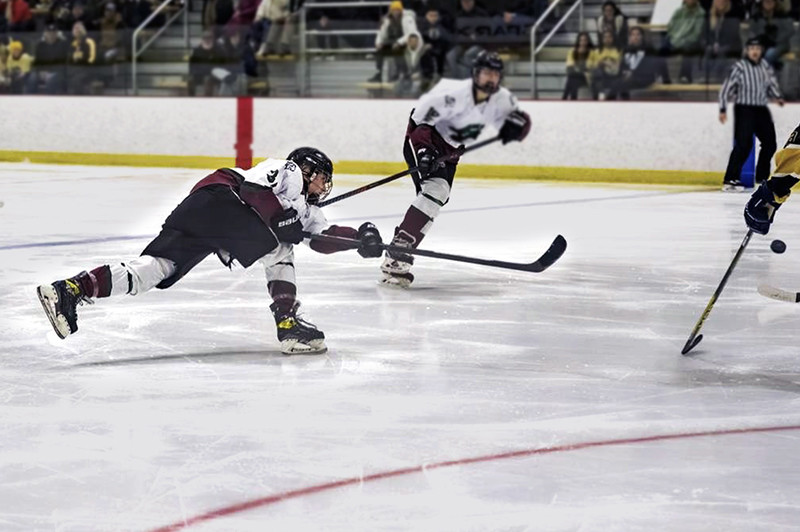Varsity blues: How AVM radiation therapy got Greta back to sports

Want to find Greta? Try the hockey rink, or softball field, or volleyball court. Where won’t you find her? Sitting on the sidelines — at least not anymore. After a tough year receiving treatment at Boston Children’s Hospital for a tangled cluster of blood vessels in her brain, known as an arteriovenous malformation (AVM), Greta’s back to her varsity-level prowess.
Benched
In March 2022, Greta — 14 at the time — started having severe headaches. The pain was debilitating, affecting her focus in school and frequently bringing her to the nurse’s office.
“It was brutal,” Greta says. “It was a struggle having to do sports and go to school every day. And no medicine would help, so it was really disappointing and frustrating.”
Greta’s mom, Sue, brought her to the pediatrician, who referred them to the Cerebrovascular Surgery and Interventions Center (CSIC) to investigate the cause of her headaches. Greta underwent an MRI, which unexpectedly uncovered the AVM.
“It was an incidental finding,” says Sue. “So it was almost like a blessing in disguise that she was having the headaches that she was having because it led us to know that she has an AVM.” Although ultimately determined not to be the cause of her headaches, the AVM would need to be treated.
Radiation to shrink the AVM
The news was overwhelming for Greta and her family. Among their concerns: what this meant for her future in sports. Already called up to play varsity hockey in eighth grade, Greta didn’t want to miss a single practice. Worried about the risk contact sports would pose to Greta’s safety, Sue was hesitant to let Greta participate and took her out of team sports until they knew more about how treatment would go. Greta and her family met with center co-directors Dr. Ed Smith and Dr. Darren Orbach to discuss next steps.

Dr. Smith and Dr. Orbach ordered more MRIs and an angiogram to get the best possible reading of the location and severity of Greta’s AVM and plan her treatment. After confirming its close proximity to areas of her brain that control speech and motor function, they recommended stereotactic radiosurgery, which uses a small dose of radiation focused directly on the AVM to shrink its size.
Greta underwent a single radiation treatment in August before starting the new school year and fall sports. Full results from the radiation could take several years, but her first follow-up MRI showed promising results. She’ll receive scans about every six months to track her progress for the foreseeable future, but Drs. Orbach and Smith have given her the green light to resume her usual activities.
A triumphant return
In addition to treatment for her AVM, Greta was able to address her headaches and has nearly eliminated the pain that had interrupted her previous school year. This year she was better able to focus, and she earned a spot on the honor roll. And as her MRIs continue to be reassuring, she’s back on the field, the court, and the ice.
Throughout the experience, Sue and Greta say the CSIC team was supportive, understanding, and accessible.
“Everyone at Boston Children’s was really comforting,” says Greta. “Being able to see the process — how they help people and how they take care of everybody — inspired me; I want to do something like that in my future. The experience actually kind of had a positive impact on me.”
Learn more about the Cerebrovascular Surgery and Interventions Center.
Related Posts :
-

Back from the bench: How my AVM was a new beginning
It’s crazy how something you once thought was the worst thing that could ever happen to you turns out ...
-

Jack: My AVM story
Last spring, during my junior year of high school, I had a head collision during rugby practice. My coach recommended ...
-

'To do what’s best for Marley': One family’s experience with a vein of Galen malformation
Last summer, Savannah and Brian were eagerly awaiting the birth of their first child. Savannah was scheduled to deliver their ...
-

Changing the world: Baby Denver leads the way after first-of-its-kind procedure for VOGM
Denver Coleman is less than 2 months old, but she’s already helped blaze a trail for other children and families, ...





